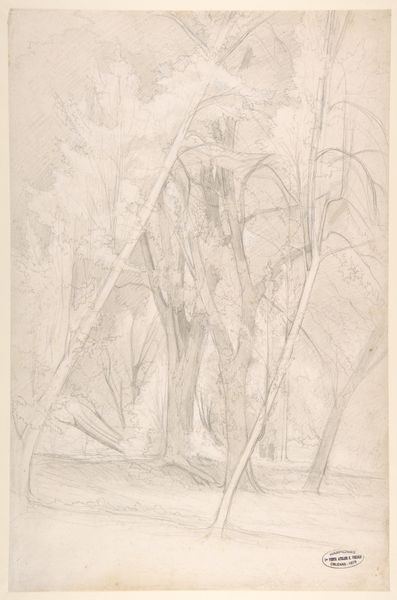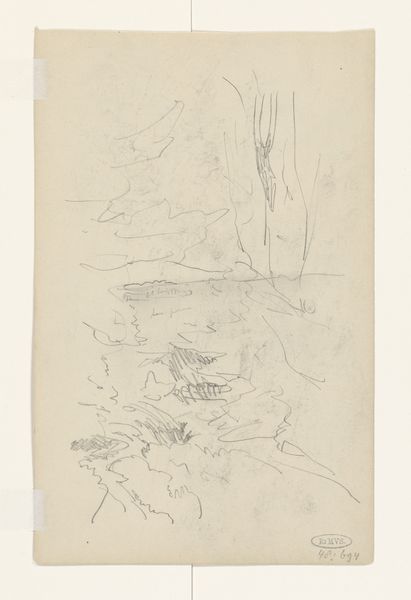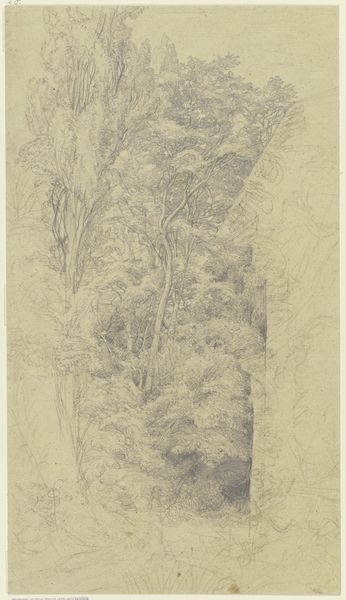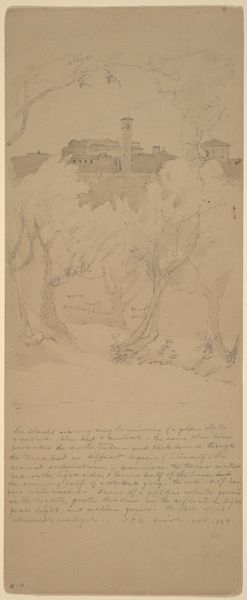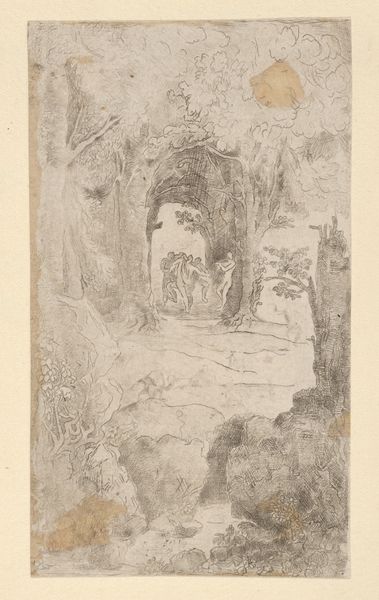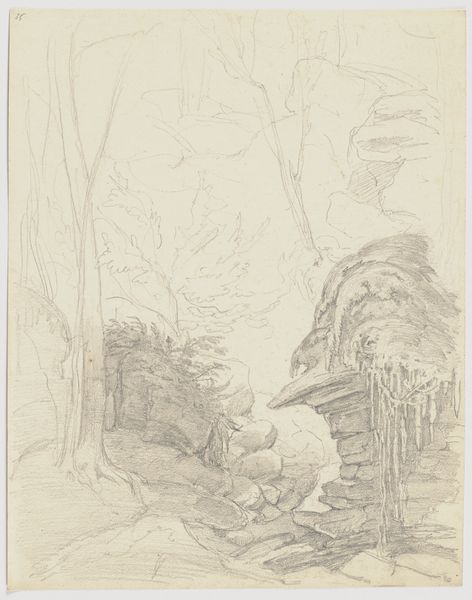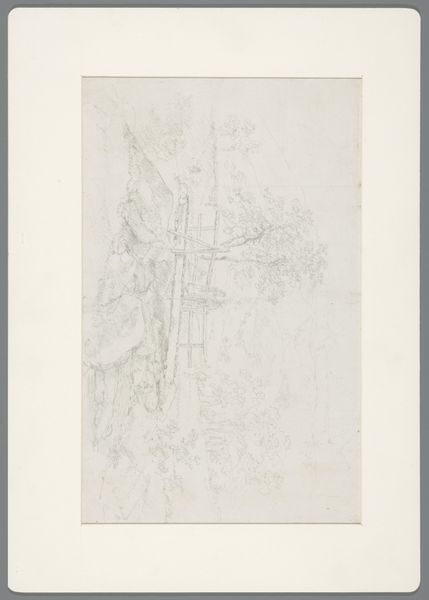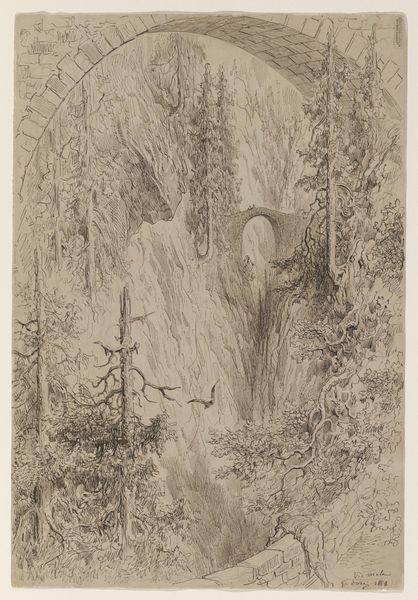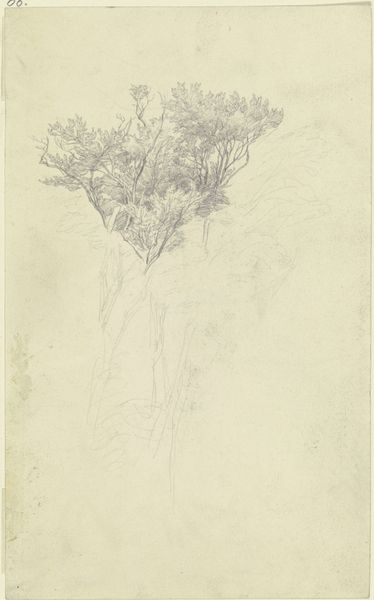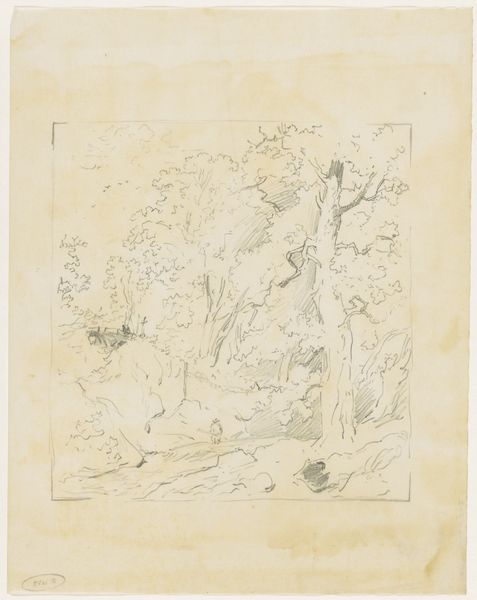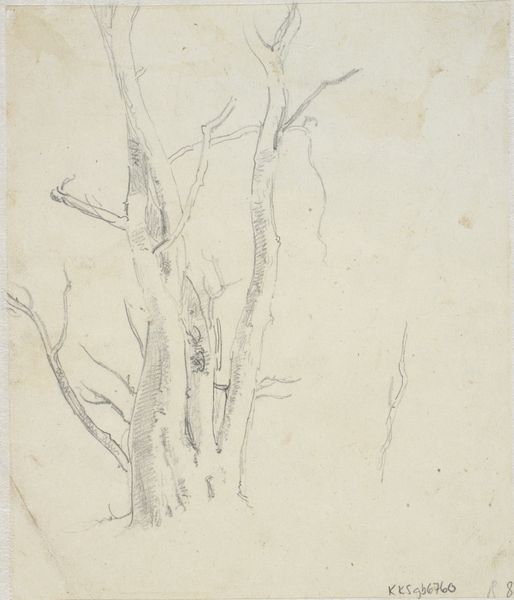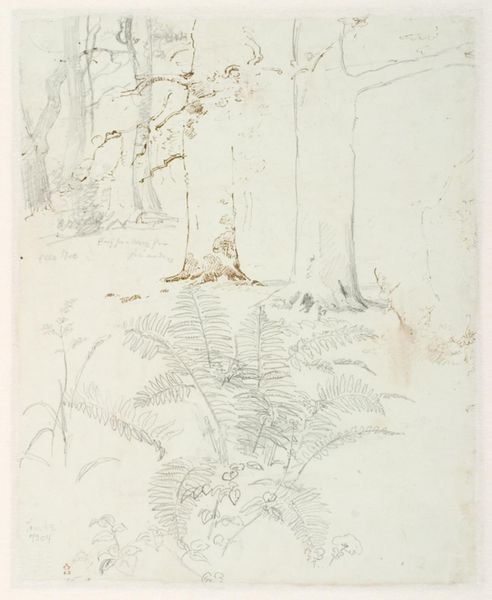
drawing, graphite
#
drawing
#
landscape
#
romanticism
#
graphite
#
realism
Dimensions: height 432 mm, width 275 mm
Copyright: Rijks Museum: Open Domain
Curator: Here we have Adrianus Johannes Bik’s "Beklimming van de vulkaan Gedé, Priangan, West-Java" created in 1819. It's a graphite drawing currently held at the Rijksmuseum. Editor: My initial reaction is a sense of depth and intricate layering. The graphite work creates a misty, almost dreamlike atmosphere within this very real landscape. Curator: Bik, working within the Romanticism movement, was concerned with accurately documenting the natural world as a means of scientific exploration and also of showcasing colonial exploits. Look at the use of graphite as a readily available material that aligns with field studies of the time. This was more about information gathering than pure aesthetic expression, even though it looks so evocative to our contemporary eyes. Editor: Indeed, but I am struck by how the medium informs the message. The grayscale and fine details lend themselves to the overall composition and play of light and shadow that evoke a distinct mood. Notice how the drawing technique emphasizes the textured bark of the trees, giving volume and realism to them? I find the piece much more visually interesting for how it plays with light and depth in what seems like a monochrome piece. Curator: Right, but let's consider that Bik and other colonial artists contributed to the broader systems of resource extraction. The raw materials present within the landscape were intended to be transformed into commodities to benefit external interests. Editor: From a formal standpoint, you have this dense, almost impenetrable forest presented through the delicacy of graphite. What a wonderful tension that really captures that overwhelming power of nature that artists in this period were concerned with. Curator: Exactly, this type of visual rhetoric promoted ideas about the exotic allure of colonial territories, which justified commercial and other activities there. What looks "beautiful" actually served a pretty exploitative function in society at that time. Editor: That exploitation is invisible when only admiring the formal artistic qualities. Yet understanding this adds another layer to the way we should understand its symbolism and appreciate how landscape representations reflect social and economic power. Curator: Agreed. This piece definitely encourages us to question our perception of the natural world within particular historical and socio-economic structures. Editor: A work where technique meets a dark side of human history.
Comments
No comments
Be the first to comment and join the conversation on the ultimate creative platform.
